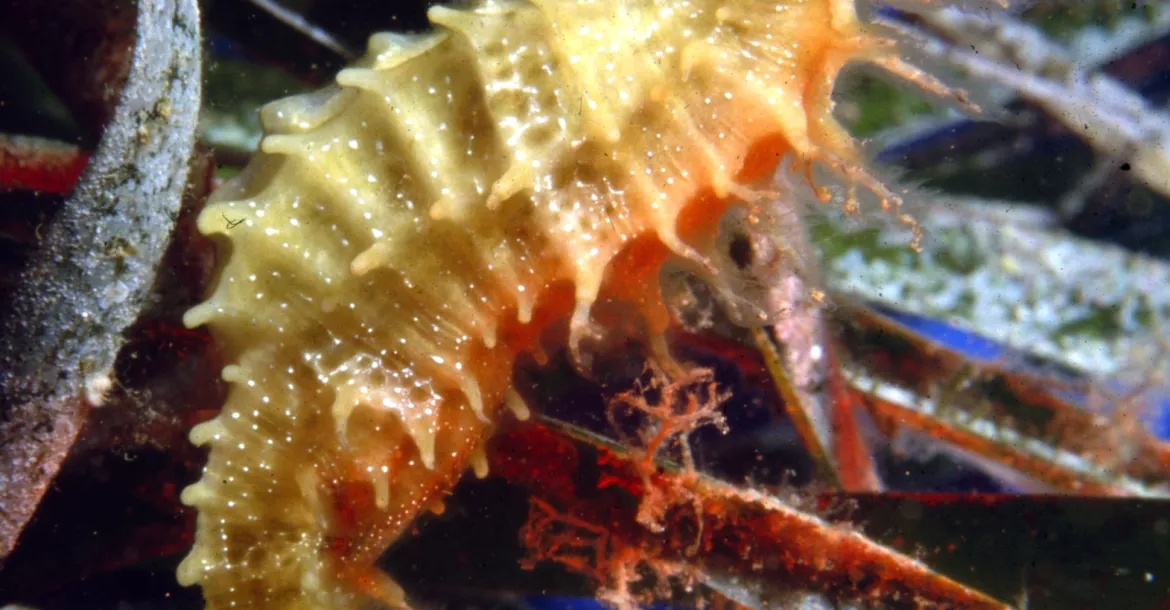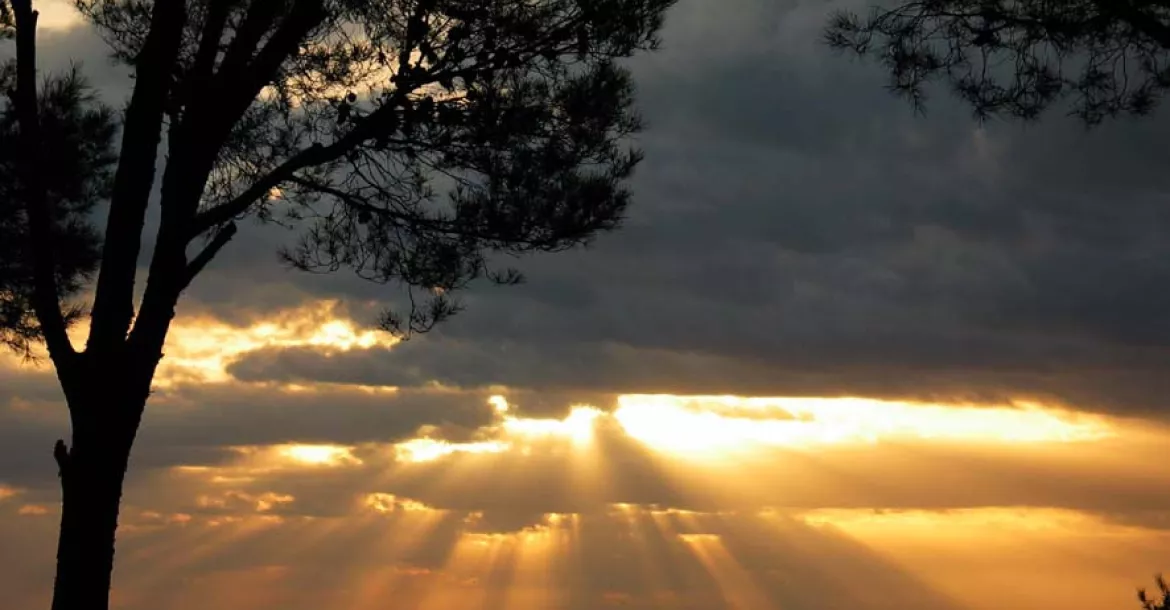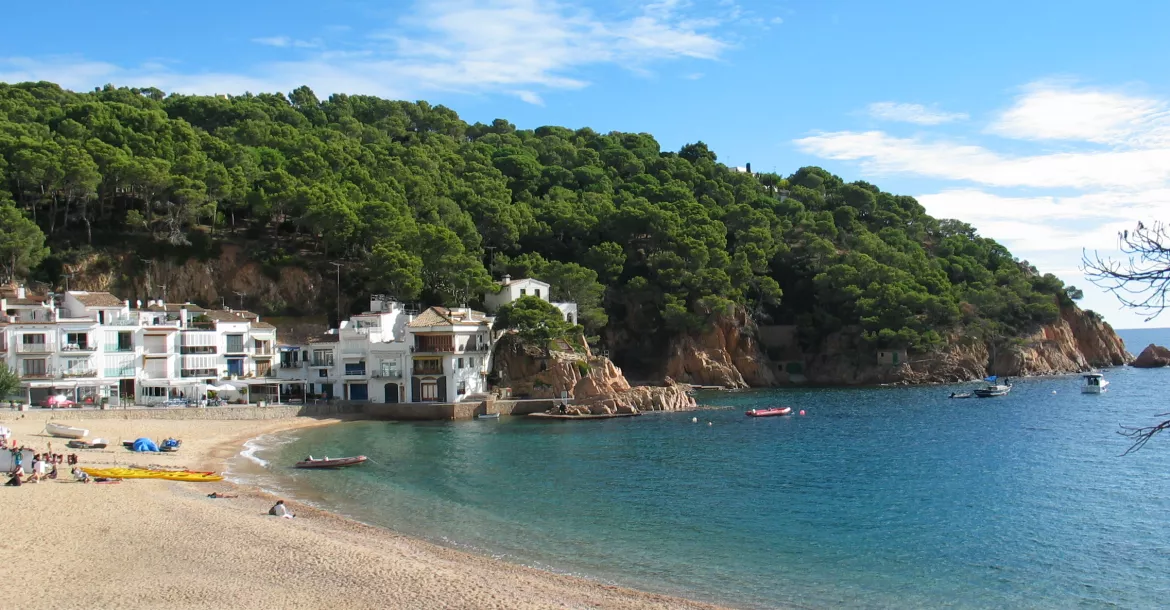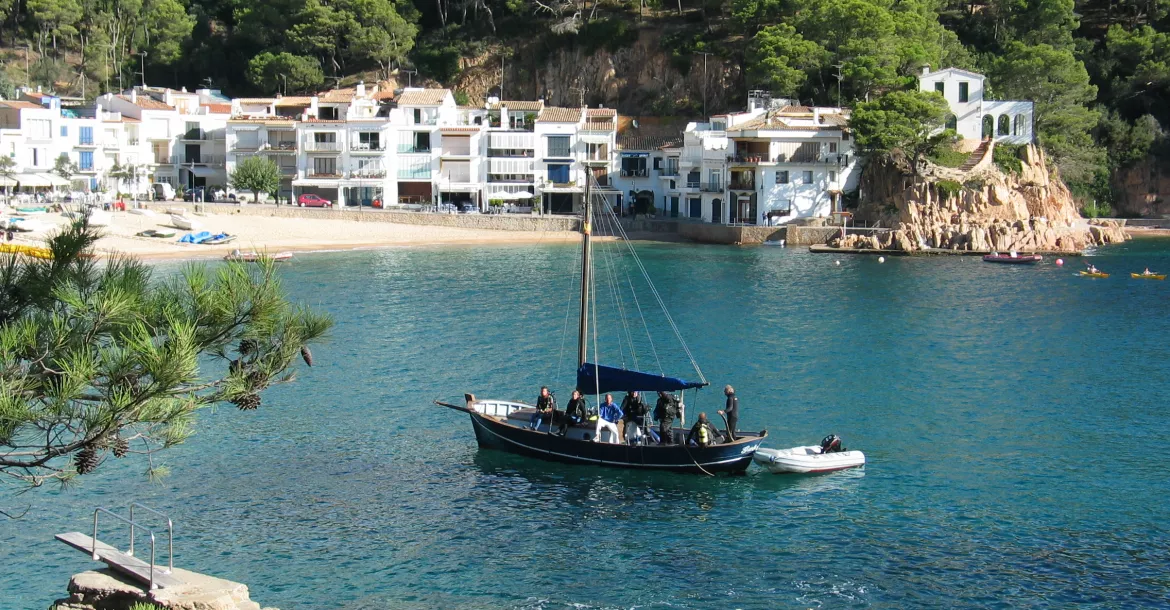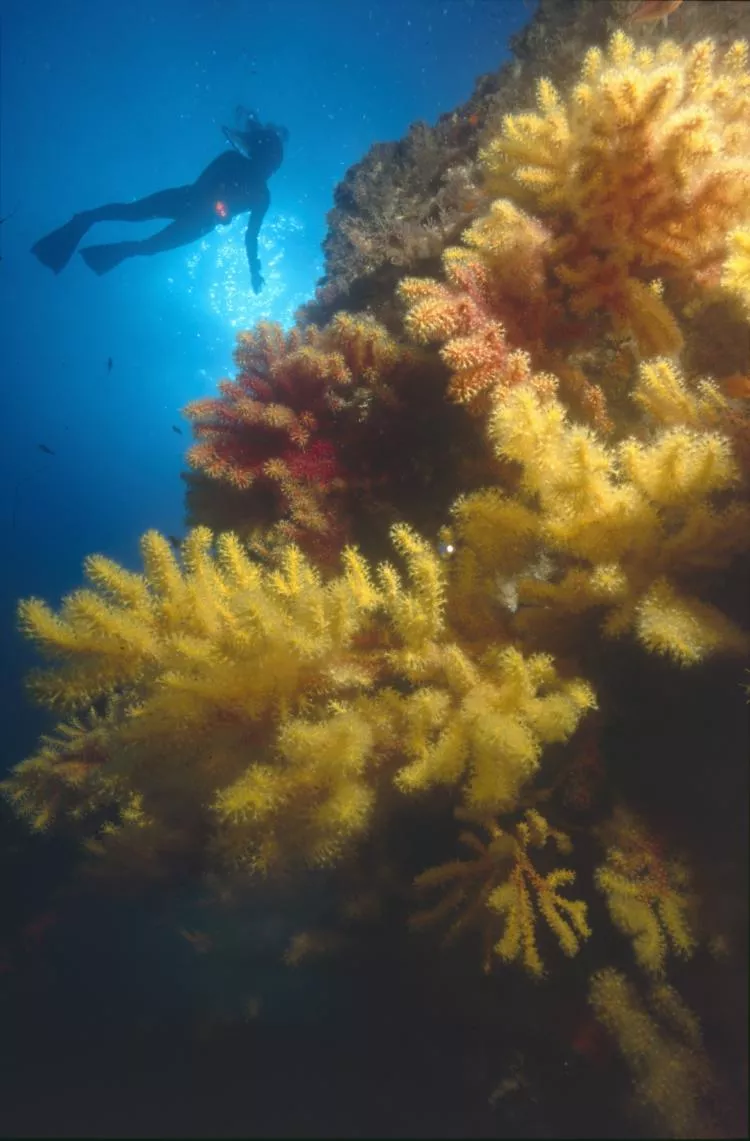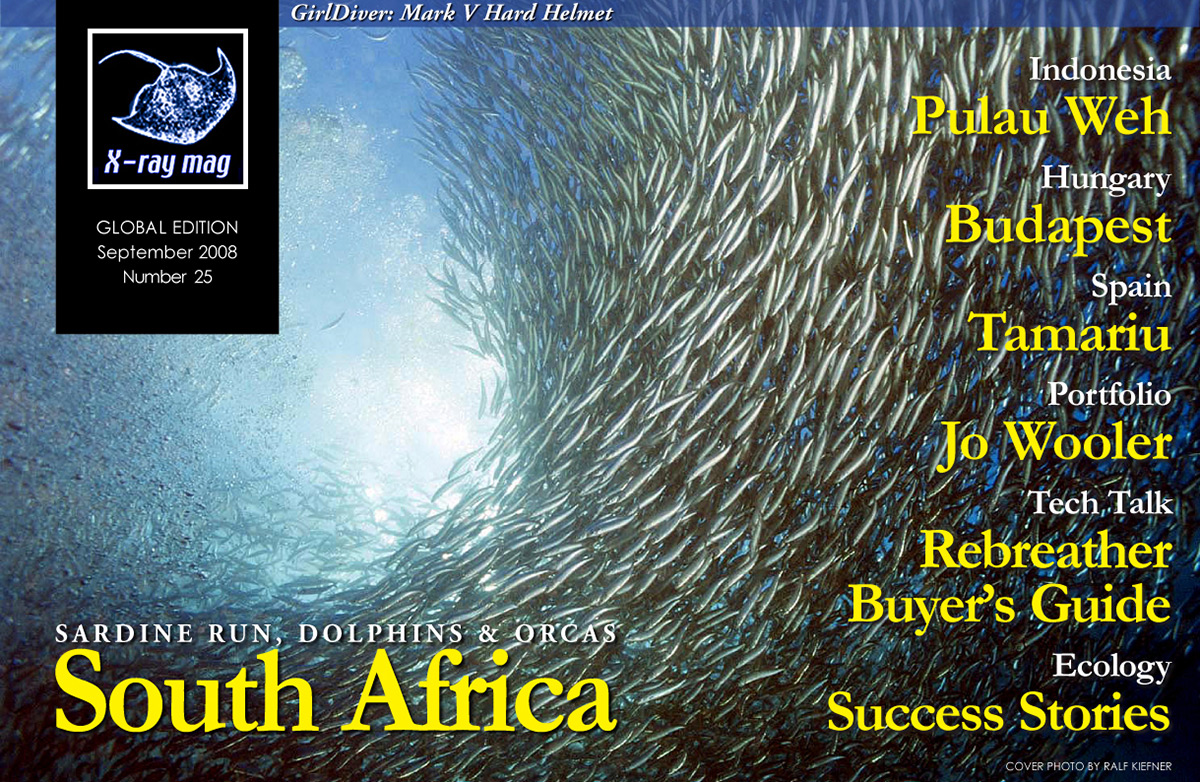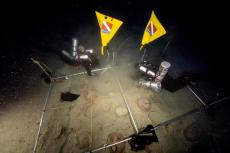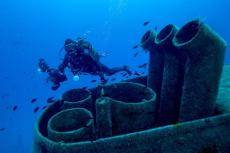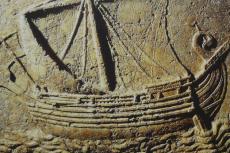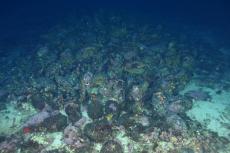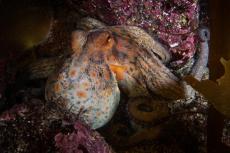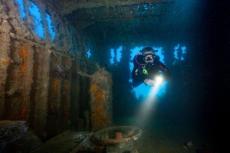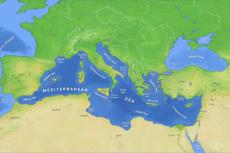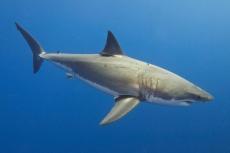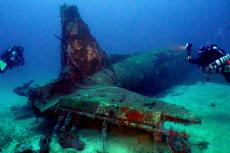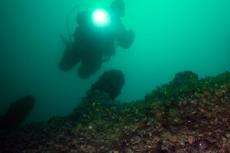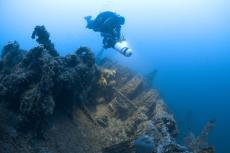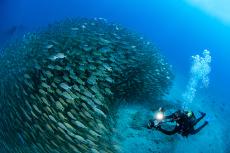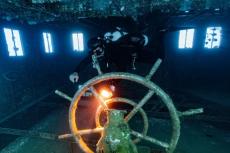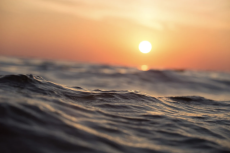I made up my mind quite a long time ago about whether or not I should entrust you with one of my favourite holiday destinations. Tamariu is not like any other small port town in which one can swim, dive and eat well. No! Tamariu is my little secret, and I share it already with quite a lot of other insiders. But if you like, I will initiate you now.
Contributed by
I cannot describe in just a few words why Tamariu counts as one of the loveliest places I have ever visited in my life. It is not just the smell of the pine woods and cypresses, the mild climate and the wild, cleft coast that hides probably the best dive sites of the Mediterranean Sea under the surface of the water, Tamariu is a small pearl that has preserved its original face in the midst of the big tourist centres of Spain’s Costa Brava for over six decades.
Tamariu still looks like a small fishermen’s village. There are no big tourist resorts or hotels, and it still combines the advantages of a uniquely beautiful diving area with the original charm of the “wild coast”. The German diver, Günter Stollberg, founded his dive centre in Tamariu 37 years ago. Since then, he has offered dive trips to nine dive sites that belong to some the best of what the Mediterranean Sea has to offer.
“Stolli” (Stollberg’s nickname) gives his divers a high degree of personalized service, up-to-date dive technology, and well cared for state-of-the-art equipment. His dive base provides a fresh water rinse shower as well as an easy on-site storage of gear. Gabriela, the 75-year-old diesel engine-powered dive boat, is a 30-foot former Spanish fishing boat that can also be operated under sail while taking a maximum of 15 divers per dive tour. She is dedicated to exploring nine different dive sites close by which present the usual varied population of marine life found in the Mediterranean.
It’s only 30 metres away from the dive center to the little pier were divers can start their dive expeditions at the house reef with a very comfortable entrance and submerged depths between 5-15 metres of depth. The highlight—the sea horses—are difficult to find, but Stolli’s partner, Ade, has eyes like an eagle and is one of the best guides for discovering sea horses. Scorpion fishes, Octopuses, Sepias, Groupers, Conger and Morays can be seen while diving at Tamariu.
There are two dive sites that are the favorites of Stolli and his team. The Tamariu reef with its Spanish name “Cala Nova”, is probably one of the most exciting dive spots on Costa Brava. The reef has five parallel running gulches; they are various in width and covered excessively with Gorgones and Zoanthids. Groupers of all dimensions, crawfish, swarms of breams and Barracuda can often be seen here, and for observers of “small” things and macro photographers, nudibranchs in all kinds of colors and forms can be seen. The reef begins with 12 metres of depth and goes down to 40 metres.
The second highlight Stolli offers is the “Furio Fito de Begur”. The reef looks like a big plateau and begins on approximately 14 metres of depth. On the north side is a drop-off wall, which is covered with Gorgones. The wall drops 42 metes vertically down. To the east of the drop off is the second reef, formed like a sugar loaf. This one begins at 25 metres. Between both reefs are big lobsters, which hide in the depths. On the plateau there are numerous Morays and a lot of Octopuses. Under overhangs and in fissures, one can regularly see Congers, Fork beards and splendid Scorpion fishes.
In April and May, the rare John Dory (Zeus Faber) can be observed, and in May-June, sunfishes can be seen quite often sleeping on the surface in the sun. And after diving activities, divers can enjoy the fine, clean stretch of the sandy beach dotted with little shops and a handful of restaurants and tapas bars where the typical Catalonian cuisine of the region is celebrated. The crew of Stolli’s dive center will offer you a distinct and fulfilling atmosphere—both below and above the waterline.
Travel information
Tamariu is situated in the northeast region of Spain, just 80 kilometres south of the French frontier. It lies in the centre of the Costa Brava. The capital of this region is Girona, an old city whose old mediaeval centre is worth a visit. Costa Brava starts in the north at the French border at Port Bou and runs down to Barcelona, the capital of Catalonia.
Costa Brava is not an all-year destination. Although it has the mild Mediterranean climate most of the year, the really cosy times start in the beginning of May. The tourist season finishes at the end of October. Sometimes the “Tramuntana” brings windy or even stormy days. That’s why you should bring along a pullover and a windbreaker, especially early in the season. April and May normally are good months for diving. During the main season in July and August, the diving centres are empty, but the beaches are overcrowded. Another reason not to go there in these months is that all the bays look like parking lots in front of a football stadium because they are occupied by hundreds of sport boats that bop up and down on their buoys in the water. No space for swimming.
Stolli’s dive centre is open from Easter to the end of October. Stolli’s team can give you a hand in finding an apartment, house or hotel room.
The best time for diving is April until mid-June and September through October. Water temperatures start at 13°C in April, but soon get warmer. In April until mid-June, a dry suit is comfortable, a semi dry suit is okay, and wet suits are only for the really rugged types. During the main season and late-summer, the water temperature reaches 23°C to 24°C. The security system of the dive centre works perfectly. Decompression chambers are located in Palamos—only a few kilometres from Tamariu and Barcelona.
By car on the highway, take the “Autopista del Mediterrani” leaving Girona-Nord, follow the C66 to La Bisbal and Palafrugell. In Palafrugell-Montras, turn left into Avinguda de Espanya. After 2km, turn right into Carrer de Bruguerol (GIV-6542) heading to Tamariu. After 2.5km, follow GIV-6542 on the left side into Carrer de la Perica until you reach Tamariu centre.
Two airport are close to this region. Girona airport is only served by some carriers such as Ryanair. From Girona airport, a bus shuttle drives to the coast. Barcelona International Airport is about 100 kilometres away from Calella de Palafrugell. The bus ride from Barcelona (Estació del Nord) to Palafrugell takes two hours and cost 15 Euro. More information and timetables can be found at www.sarfa.com. The best way to reach the destinations and have mobility during the visit is to rent a car. Cars can be rented directly from Barcelona’s airport with really good terms, for example, one week in May starts at 119 Euro. A mid-class car (Peugeot 107) rents for 159,50 Euro including insurance and unlimited kilometres for seven days at www.carbookers.com.
What you must see
Of course the medieval cities of Pals and Peratallada are a must-see. If you are interested in the arts you should do the trip to Cadaqués. It’s another lovely pearl close to the French border. The famous painter, Salvador Dalí, lived there. You can visit his house in the little bay of Port Lligat and see a set of fishing huts that Dalí renovated. It is here where he based his summer home and workshop. The estate has a maze-like structure with different areas on different levels where Dalí’s furniture and personal objects are preserved. (book reservations beforehand).
If you stay for a night and are still interested in good diving in Cadaqués, you’ll find the dive centre of Ulla and Paul Bräutigam right next to the Dalí house. The diving centre offers dive trips to the fantastic dive spots of the national park of Cape de Creus (www.ullaundpaul.de). On the way back to Tamariu, you should visit the Dalí museum in Figueres, Dalí’s hometown. The museum is located in an old theatre, and it is here where the first works of the famous painter were shown to public. Dalí himself restored the building in 1960. It had been bombed and destroyed during the Spanish civil war. It re-opened its doors to the public in 1974. After his death on January 23, 1989 in Girona, Dali was buried in his hometown of Figueres in the crypt of his museum.
Check out La Bisbal. It’s a city you will pass on your way to Tamariu anyway, and you will immediately be caught by its unique presentation of the fine art widely produced here. From the moment you reach the first house on the main road of the town, you will recognize that La Bisbal is one of the biggest pottery centres in Catalonia. Thousands of pottery products and ceramic artworks are displayed directly on the main road—an invitation to stop and take a closer look at the ceramic shops in town.
Well, if you are a diver, your heart might be bleeding by now, but a look into the market hall of Palafrugell (early in the morning from 6 am) is very interesting and certainly shows a bigger offer of fish than you will ever see on your dives. This visit should be combined with market day in Palafrugell on Monday. It’s a typical Spanish market with a wide range of products and many impressions and views into the Catalonian soul. ■

